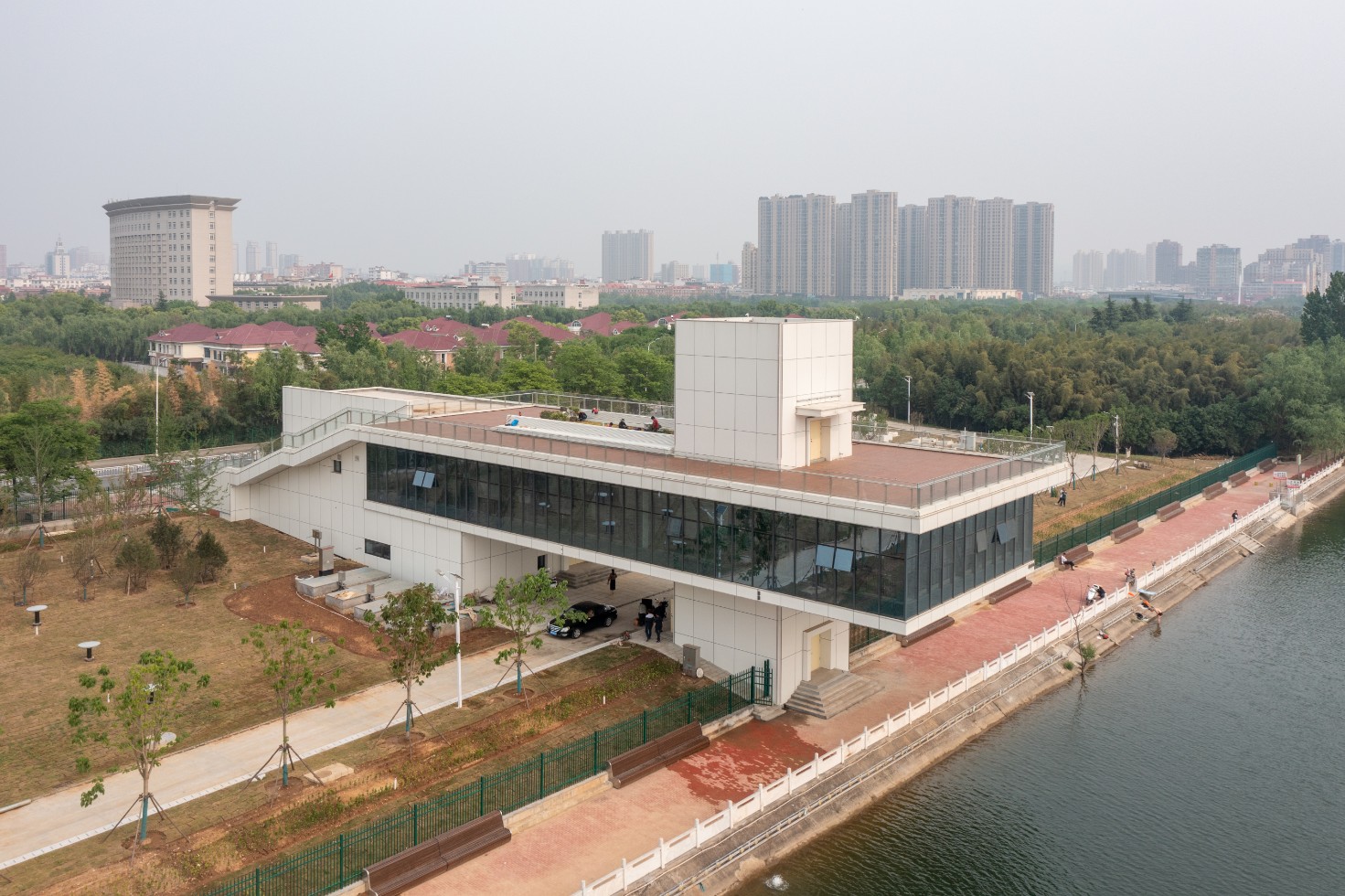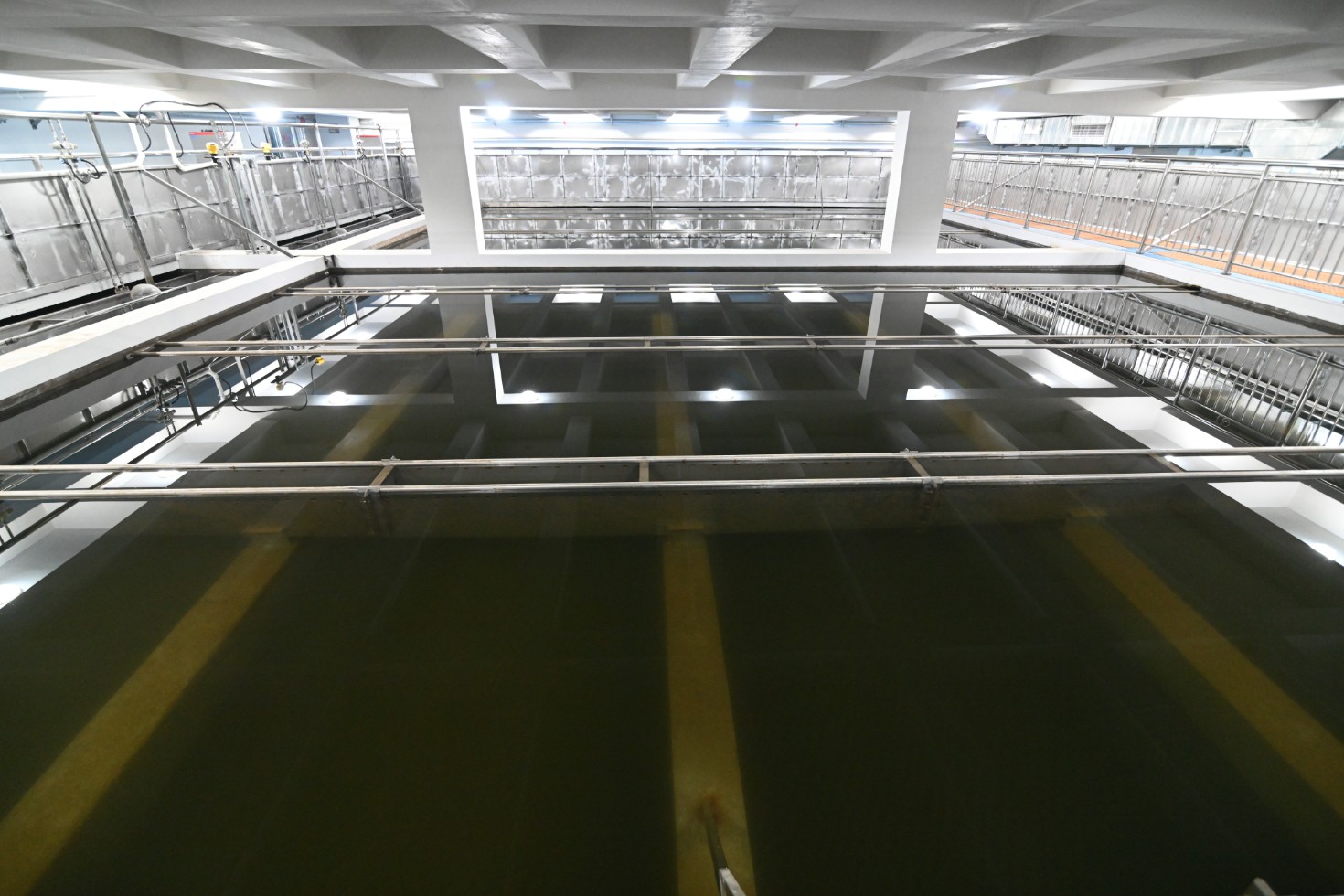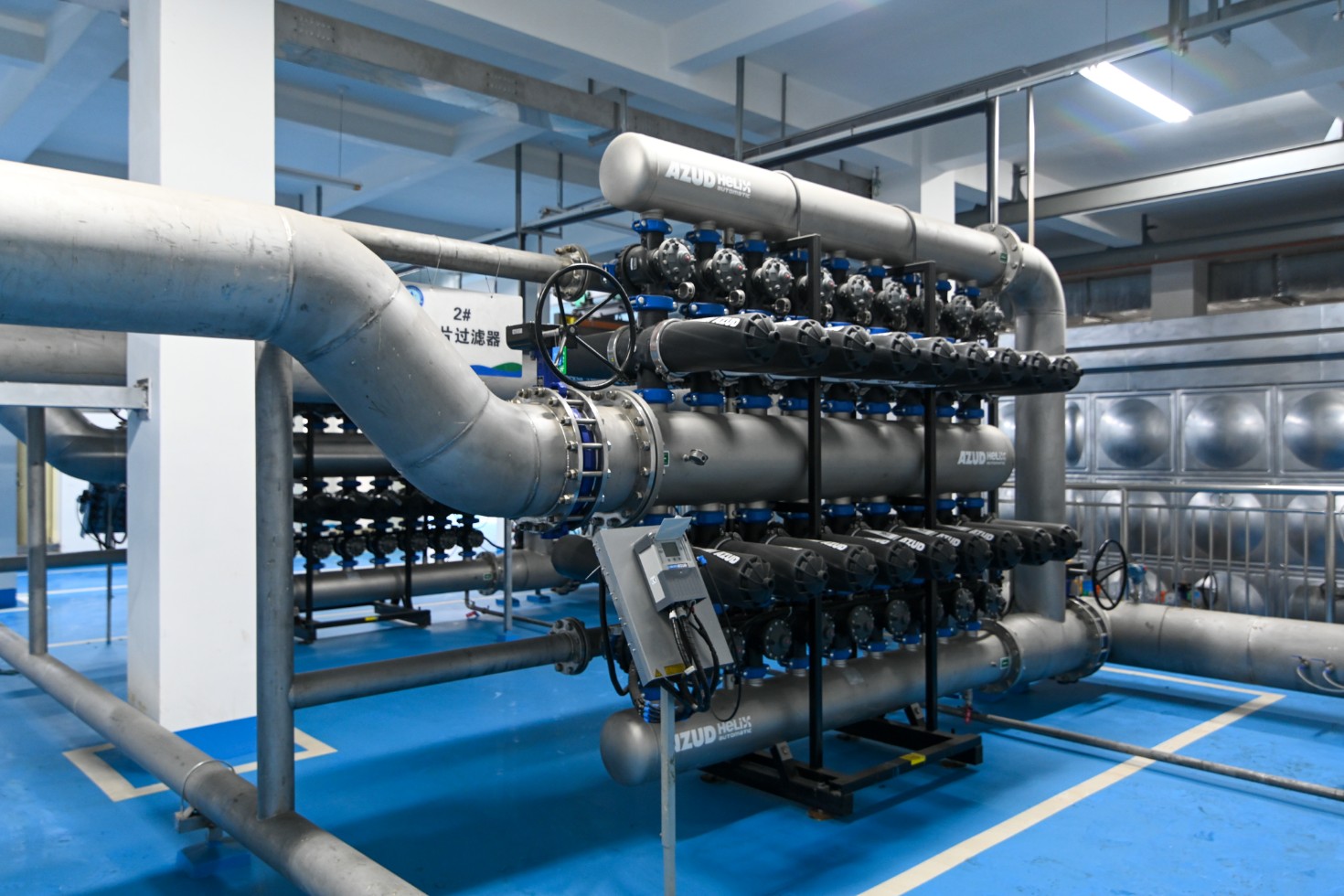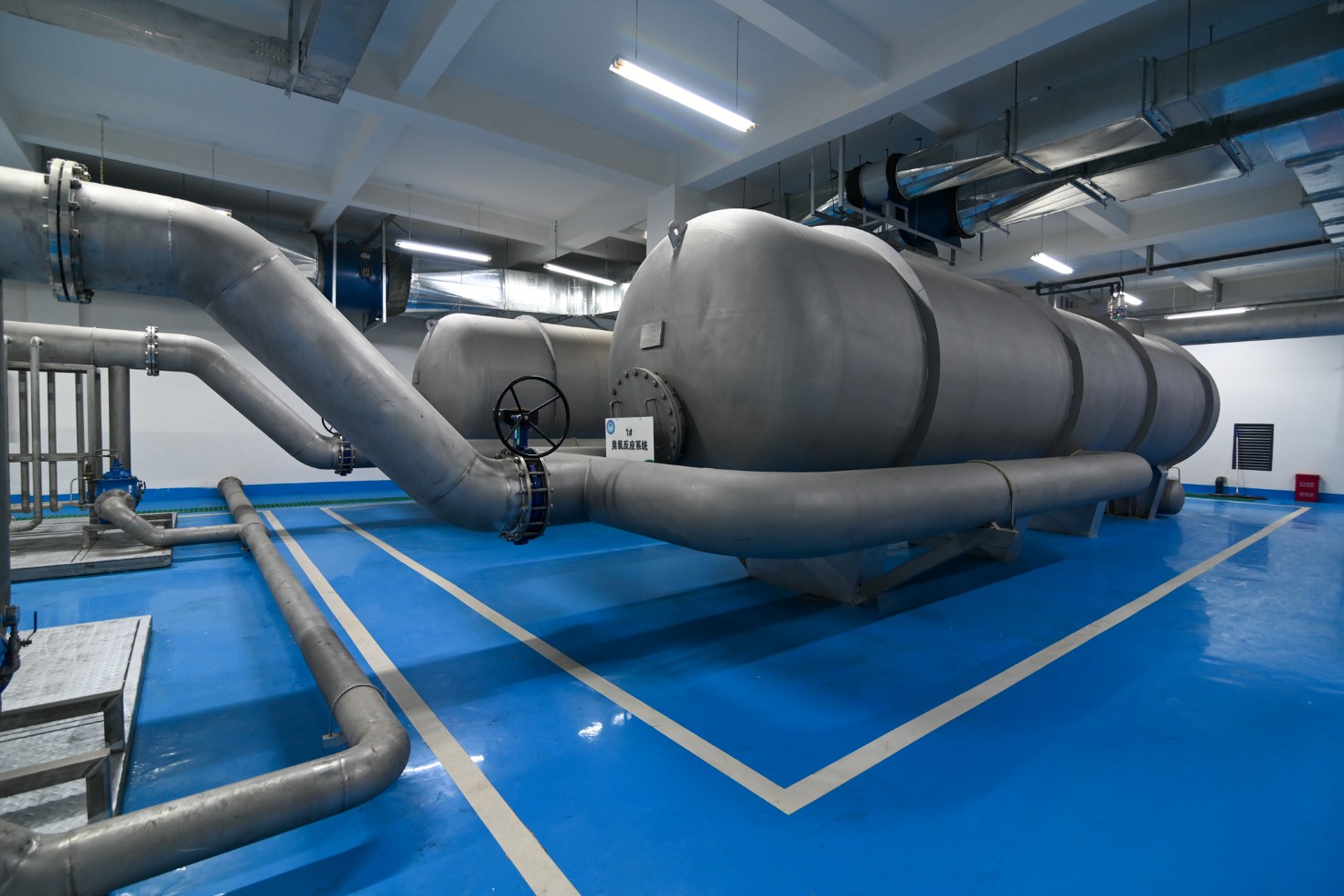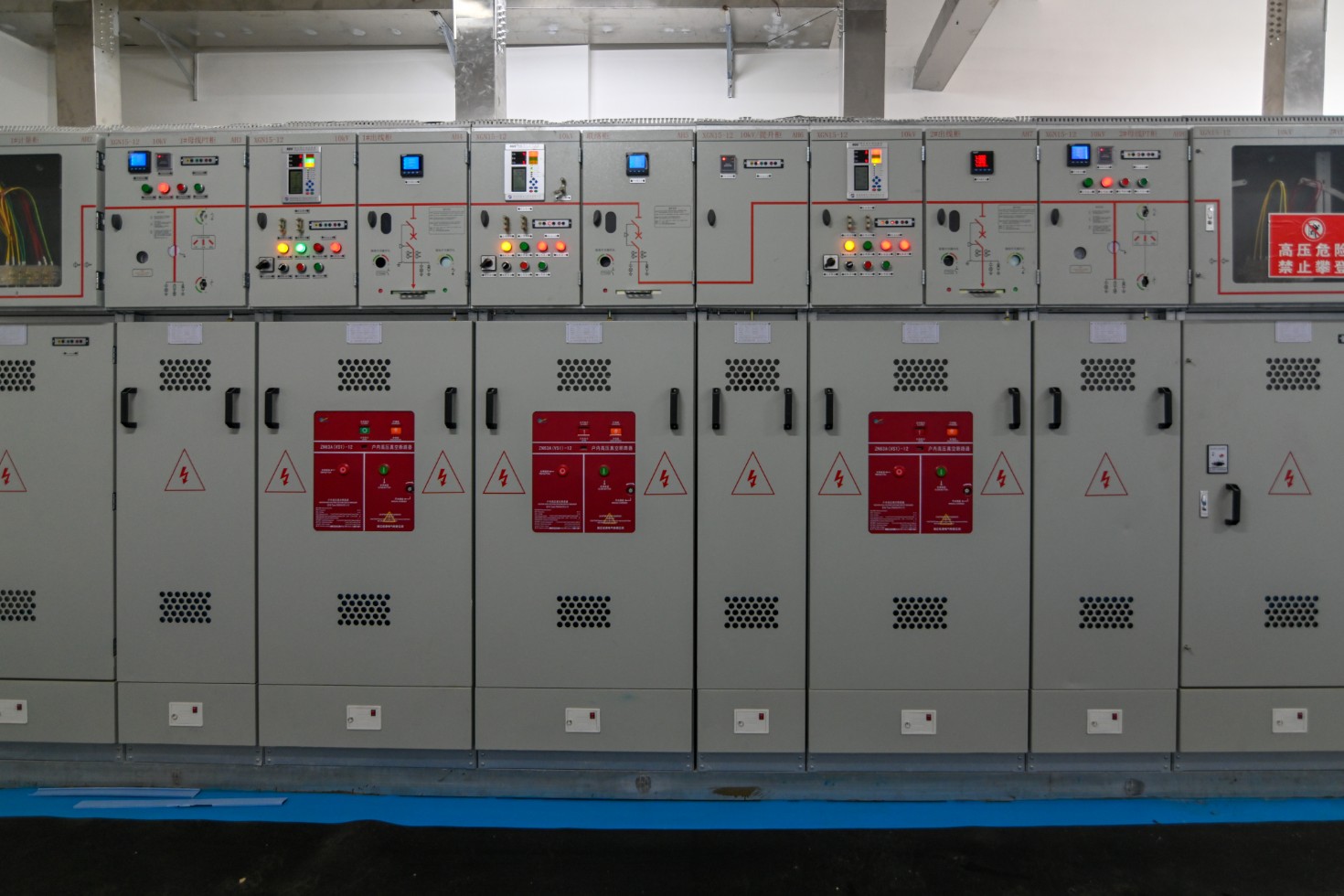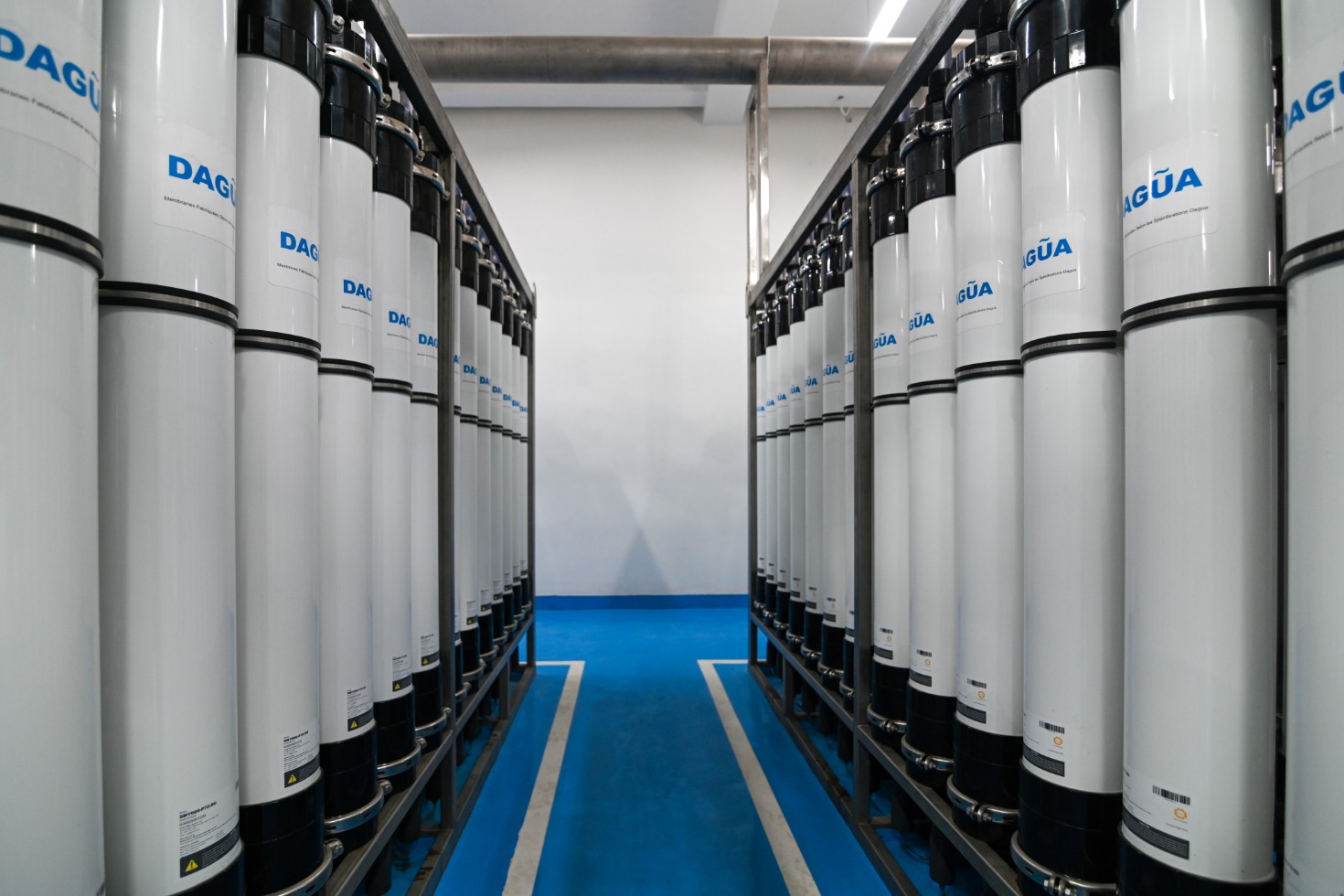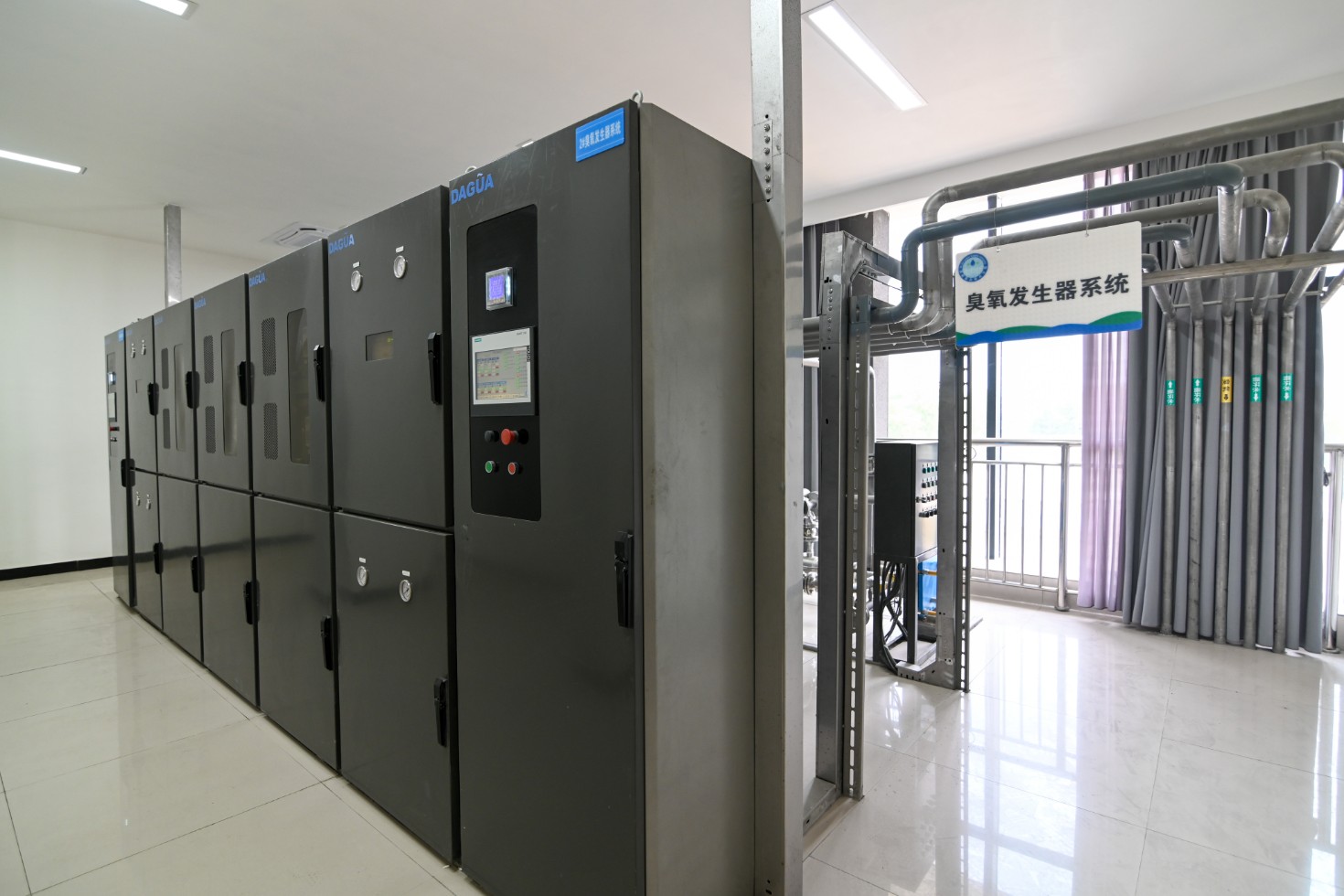Xixia Scenic Underground Water Plant 30,000 Tons/Day Project Using Advanced DAGUA Natural Water Purification Technology
The Xixia Scenic Underground Water Plant has a capacity of 30,000 tons per day and employs the advanced DAGUA natural water purification technology. This innovative technology combines strong ozone oxidation and oxidation-resistant ultrafiltration membrane technology, eliminating the need for any water treatment chemicals during operation and producing no chemical sludge. The ultrafiltration membrane cleaning uses continuous automatic ozone microbubble technology combined with air-water backwashing (without chemical reagents).
Raw water is taken from the Guan River to the initial sedimentation tank, where it undergoes natural sedimentation before entering stainless steel water tanks. It is then lifted by three pumps (two operational, one standby) to disc automatic filters (self-cleaning filters). These disc filters remove larger particulate impurities from the raw water to protect the subsequent ultrafiltration membranes.
Fifteen percent of the water from the disc filters is pressurized by a booster pump and rapidly mixed with high-concentration ozone through an ozone injection and mixing device. The pressurized, mixed water then enters an ozone reactor, where soluble organic matter in the water is quickly oxidized and decomposed, algae are eliminated, and soluble iron and manganese ions are oxidized to insoluble states. This process removes color, viruses, bacteria, E. coli, and odors. Additionally, ozone breaks down organic substances (humic acids) that would typically pollute the ultrafiltration membranes into less membrane-fouling and more dispersed substances. This reduces membrane fouling and makes the fouling layer on the membrane surface easier to remove during backwashing.
The water treated by strong oxidation in the ozone reactor passes through an ozone microbubble generator (which continuously cleans the subsequent membrane unit to prevent membrane fouling) and an ozone degassing device (which removes part of the free ozone to avoid damage to the ultrafiltration membrane from high ozone concentration) before entering the oxidation-resistant ultrafiltration membrane unit. Ultrafiltration technology uses pressure difference as the driving force and the permeability of membranes to separate ions, molecules, and certain particles in water. The pore size range of oxidation-resistant ultrafiltration membranes is approximately 0.01 to 0.1 micrometers. The oxidation-resistant ultrafiltration system employs cross-flow filtration, which prevents the accumulation of a large amount of pollutants on the membrane surface, thereby reducing membrane fouling and maintaining filtration performance. The ozone in the water after the ozone reactor can perform ultrafine bubble cleaning of the ultrafiltration membranes, preventing scaling.
The water filtered by the oxidation-resistant ultrafiltration membrane unit meets the standards and finally enters the clear water tank in the plant for disinfection and supply. The ultrafiltration backwash water is discharged into the drainage pump station.
